One of the most well-known plants in the world are clovers. Whether this be because of their iconic looks, or the hunt for four-leaf clovers, clovers are an insanely popular choice for gardeners. However, did you know that clovers have weeds that look like them?
Although clovers are very unique plants, there are plenty of weeds that look similar if not identical to clovers. Some of these weeds include, but are not limited to: oxalis, white clovers, creeping charlies, lamb’s quarters, purslanes, wild violets, knotweeds, black medics, henbits, and yellow sweet clovers.
These weeds can be difficult to identify and can quickly spread in lawns and gardens, so it’s important for gardeners to know what to look for in order to properly manage them.
The rest of this article will cover 10 weeds that look like clovers.
10 Weeds That Look Like Clovers
Clovers are gorgeous plants that have three, or occasionally four, lobes on the top of them. Those lobes give them the iconic clover look that makes them easy to identify. The four leafed variants are so rare that you only have a 1 in 10,000 chance of finding one.
However, despite how clovers are considered very lucky and famous, did you know that there are plenty of weeds that look like clovers? Thanks to these similarities, it’s easy to mistake a weed as a clover.
The good news is that there are ways to prevent weeds from forming, and also ways to get rid of them once they appear. So, if you find a plant that looks like a clover, don’t panic! Instead, you should identify what weed it is, then, what you can do about it.
Also see:
10. Oxalis
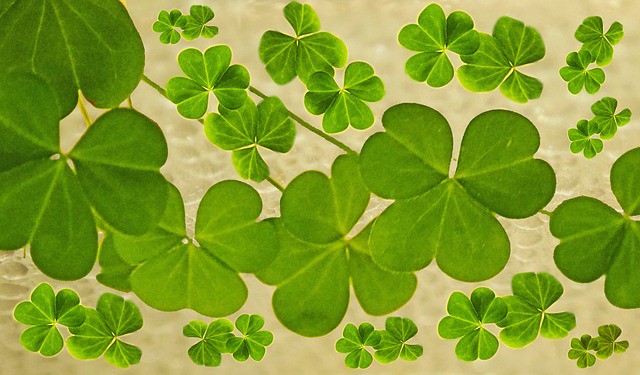
Oxalis weeds look eerily familiar to clovers because of the shape of their leaves. Although they have a more yellow tint, they have the four sections that resemble clovers. If you don’t have a trained eye, you’ll easily mistake these weeds as clovers.
These weeds grow in sunny, or even shady, landscapes. If you have an area in your backyard that fits that criteria, you should check it for oxalis. Look for cup-shaped leaves that have a yellowish or light green shade.
To combat these weeds, consider mulching your garden areas during the springtime, that way you can prevent them before they happen. Or, you can pull them as they appear.
9. White Clover

White clover, as the name suggests, looks quite a bit like clovers. White clover weeds have the leaves that look like a clover’s four lobes, but instead, they have three lobes. They have white tips that resemble flowers, which makes them easy to spot.
Luckily, they’re as easy to stop as they are to spot. To get rid of them, mulch your garden areas to prevent the weeds from growing. However, if they already grew, you’ll have to use an iron-based herbicide to get rid of them. This is the most effective way to combat them.
8. Creeping Charlie

These weeds are extremely popular, which means you’ve definitely seen them at some point in your life. In the late spring, they can be easily identified by their purple flowers. However, in other seasons, it becomes more difficult to spot them.
They have scallop-like leaves that resemble a clover’s lobes. To tell the difference between them and clovers, look for how wide the leaves are. The leaves on a creeping charlie are much larger and wider than the leaves on a clover.
7. Lamb’s Quarters
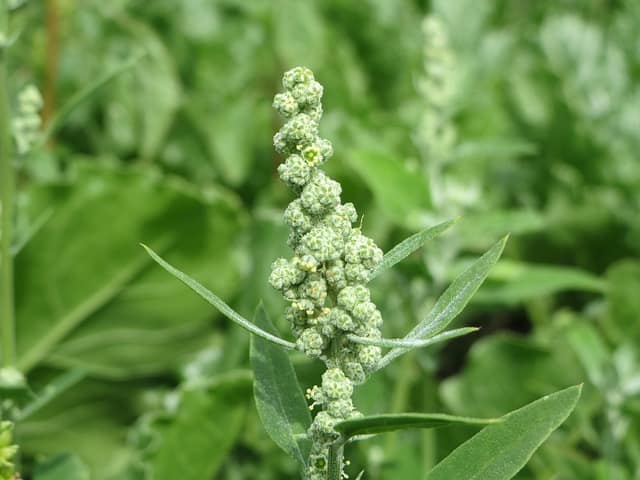
Yet another weed with scalloped leaves, lamb’s quarters are similar to clovers, but the easiest to tell apart out of all the look-alikes. Although they are easy to tell apart, lamb’s quarters still have a similar shape to clovers, but the difference is, their leaves are much farther apart.
6. Purslane
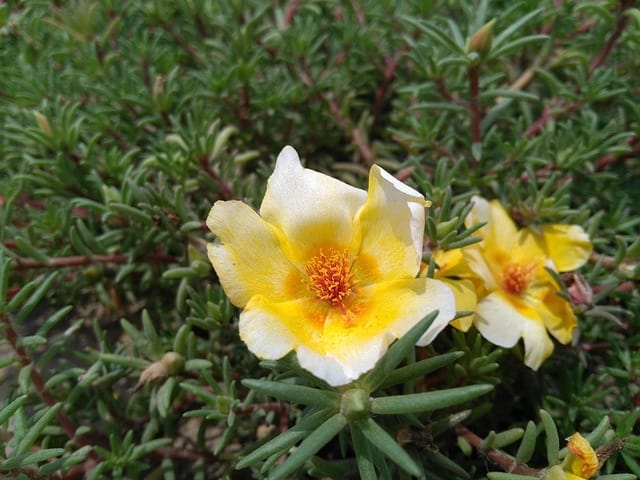
Purslane, like lamb’s quarters, have a similar shape to clovers, but their leaves are much more spread out. This allows you to tell the difference between them and clovers. Purslane can also have tiny yellow flowers at the ends of their stems depending on the season.
5. Wild Violet

Wild violets are pretty, green weeds that grow in garden areas and landscapes, making them a high threat to your garden. The worst part – they look like clovers due to how their leaves are shaped. Unlike purslane and lamb’s quarters, the leaves are close together.
To tell the difference, you’ll have to look at the leaves in particular. Wild violets have leaves that are curved like a heart, which gives them the illusion that they’re a clover. However, upon closer inspection, you won’t see any lobes on them, telling you that they’re not clovers.
4. Knotweed
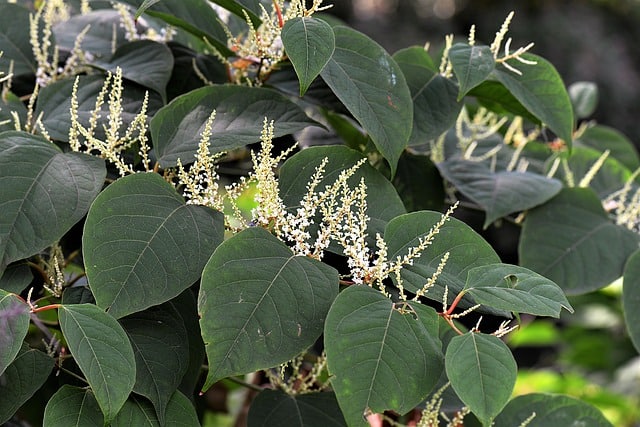
The resemblance isn’t as clear here, but knotweed has a similar shape and structure as clovers. They’re longer than clovers, and their leaves are much larger, but they grow in similar areas and have curved leaves that you can mistake as a clover if you aren’t familiar with them.
To prevent them from growing, put mulch down where you plan to put your garden. Luckily, they’re easy enough to hand-pull if they grow in your garden.
3. Black Medic

Black medic weeds are tiny little leaves that look like clovers. However, the main difference is that they’re much smaller than clovers, thus cluing you in on their differences. Be sure to pay attention to how small they are.
2. Henbit
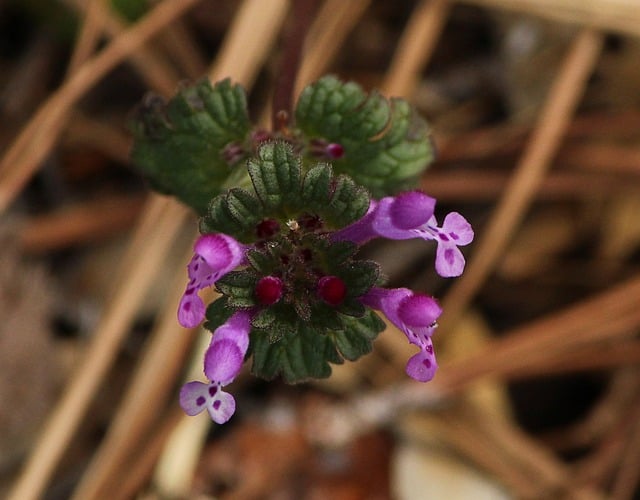
Henbit looks very similar to black medic, which makes the identifying process pretty simple. They both are small and have clover-shaped leaves, and to further spot henbit, look for purple flowers.
1. Yellow Sweet Clover

Lastly, the yellow sweet clover is exactly like a clover. It has the leaves that are nearly identical to a clover, which makes it hard to tell apart from other weeds and clovers. However, it does have a tell: to spot the difference, look for the yellow flowers.
Summary
Clovers are a popular plant that are known for their four-leafed variant. Four-leafed clovers are so rare that you only have a 1 in 10,000 chance of finding one. Along with that, there are countless weeds that share similar structures to clovers.
These weeds have the same, or similar, leaves that clovers do. They have a scallop shape, or a heart shape, or a shape that resembles the iconic clover look. When you see a weed like this in your yard, you should work to remove it, then mulch the area to prevent more weed growth.
There are dozens of weeds that look like clovers. These weeds include, but are not limited to: oxalis, white clovers, creeping charlies, lamb’s quarters, purslanes, wild violets, knotweeds, black medics, henbits, and yellow sweet clovers.
Frequently Asked Questions
Clovers are a popular plant that many people have questions about. So, here are three questions and answers regarding clovers.
How To Grow Clovers?
For starters, you have to check the pH of your soil since clovers prefer soils with pH between 6 and 7. Plant your clover in the early spring, when the ground is still moist from melting frost. That will give the clover the ideal growing environment.
However, if you live somewhere the fall weather is tame, you can also grow clovers during the fall months. Do it in the early fall, before the temperatures start dropping. If the temperature is going to drop below 40 degrees Fahrenheit around the time you’re planting them, don’t do it.
Do Clovers Like Dry Or Wet Grounds?
Although it’s true that clovers can live in drier soils, you should plant them in areas that have moisture. To see the best results, you should keep them in areas where the moisture is even throughout the entire ground. This will keep them healthier and happier.
Of course, you can keep your clovers in dry soil, just be prepared to see less growth. In dry soil, clovers don’t get the water they need to sustain growth, therefore limiting their abilities. If you want a more contained clover field, then keep them on dry soil. If not, then try wet soil.
Are Clover Lawns Popular?
This may seem like a stretch, but yes, clover lawns are extremely popular and a replacement for regular lawns. This is because clovers are resistant to pests and diseases. Keep in mind that even though they’re resistant, they are not immune, so still take care of your clovers.
You can also add some grass to your clover lawn. Yes, this may seem counterproductive, but having a bit of grass in the mix helps keep your clovers healthy. Not only does the mixture of grass and clovers make your lawn appear greener, but the addition of grass prevents patches.

Hey, I’m Lisa and I’ve been an avid gardener for over 30 years. I love writing, talking and living in the garden! Feel free to connect with me on my socials below

